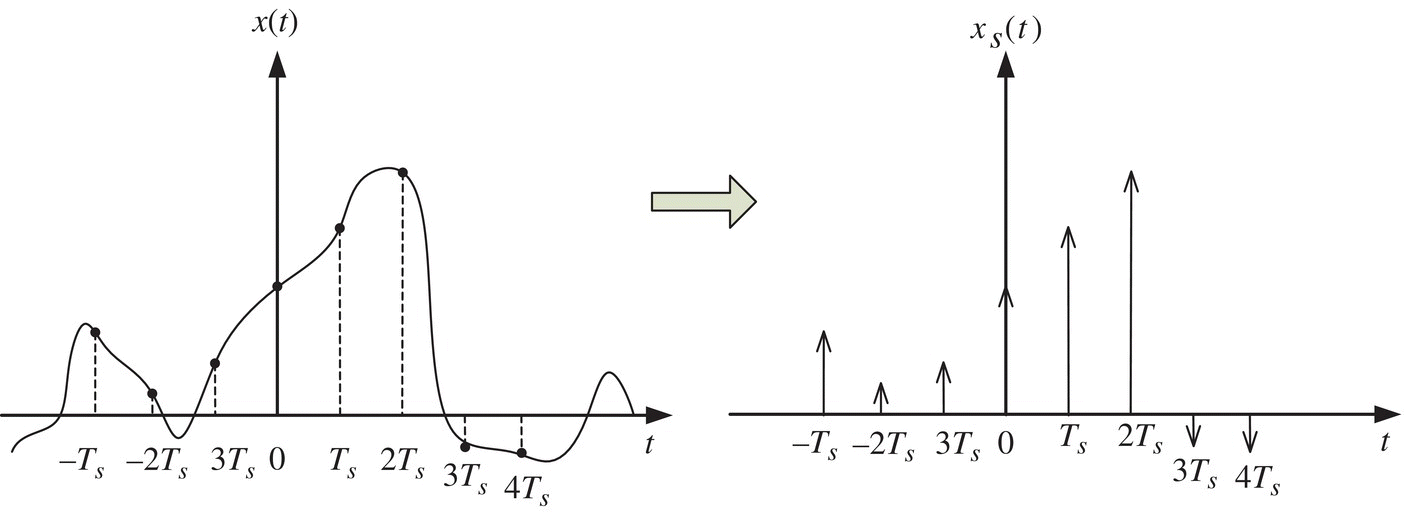APPENDIX ANYQUIST SAMPLING THEOREM
Software-defined radios and cognitive radios are digital communications devices that hold and process information in digital domain. The first stage of interface between analog and digital worlds is the process called sampling. Given an analog information waveform x(t), sampling generates a discrete-time sequence x[n]. The important objective is to ensure that there is no information loss in representing the analog waveform x(t) by the sampled sequence x[n]. If this objective is indeed satisfied, then the sequence x[n] must be equivalent to the analog waveform x(t) in the sense that it is possible to reconstruct x(t) from the sequence of samples x[n].
Let ƒs denote the sampling rate (in the number of samples per second) so that ![]() is the corresponding sampling period. Let xs(t) denote the sampled version of x(t) as shown in Figure A.1:
is the corresponding sampling period. Let xs(t) denote the sampled version of x(t) as shown in Figure A.1:



FIGURE A.1 A signal x(t) and its sampled version xs(t).
Get Signal Processing for Cognitive Radios now with the O’Reilly learning platform.
O’Reilly members experience books, live events, courses curated by job role, and more from O’Reilly and nearly 200 top publishers.

